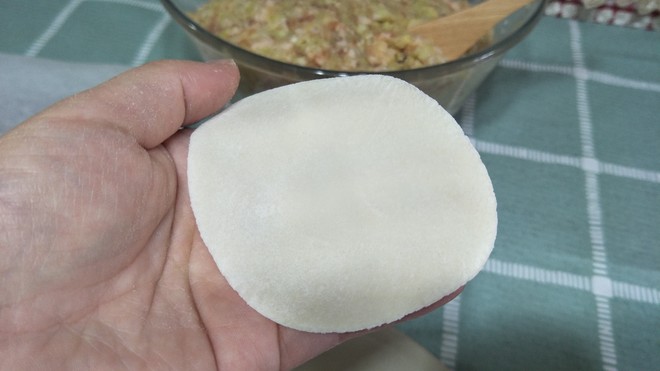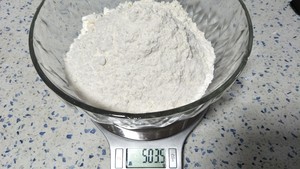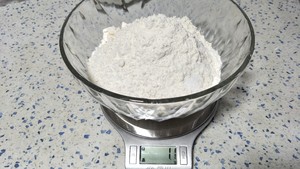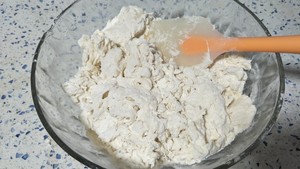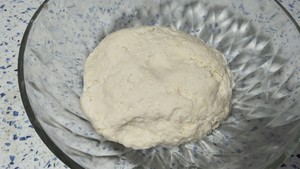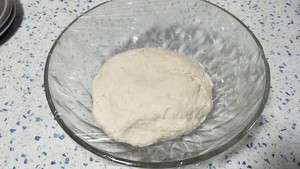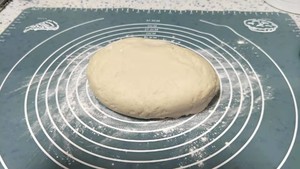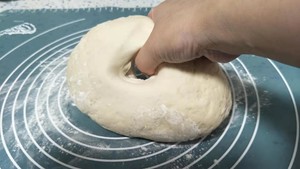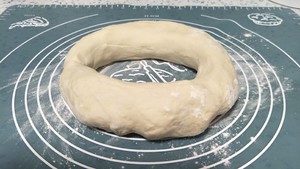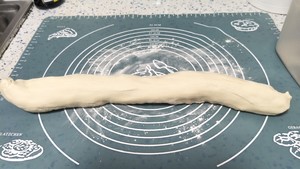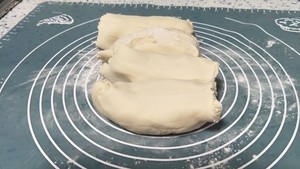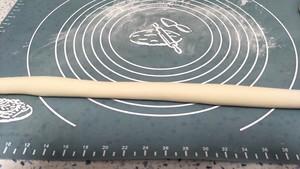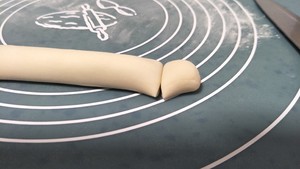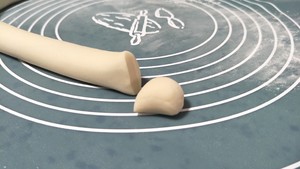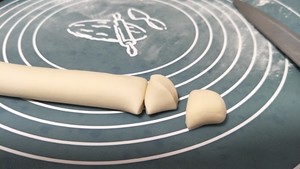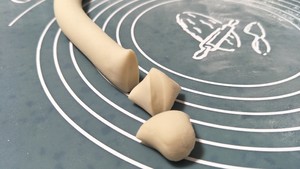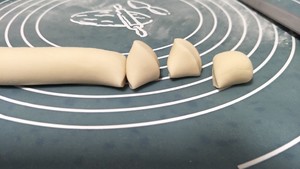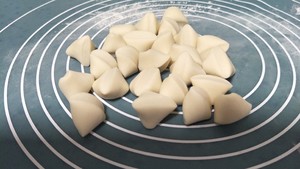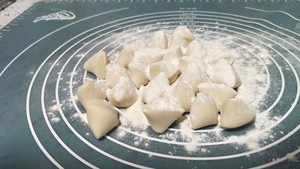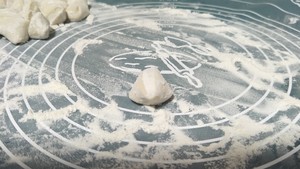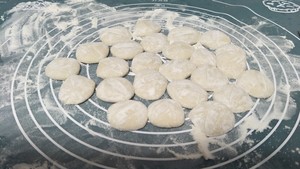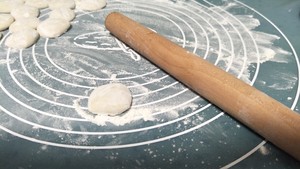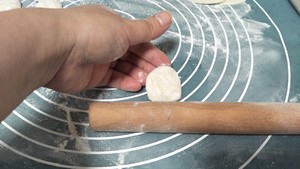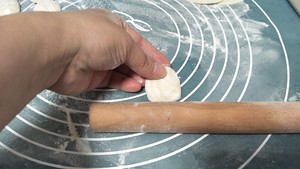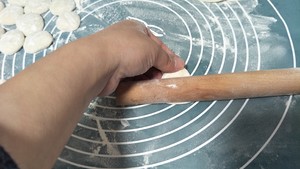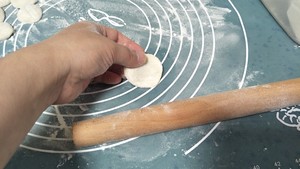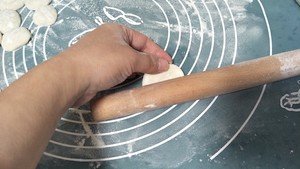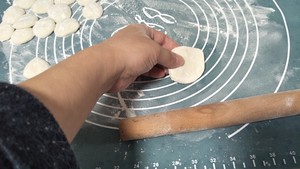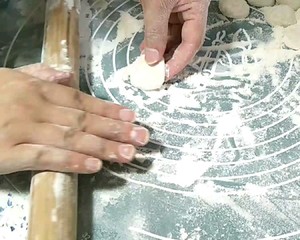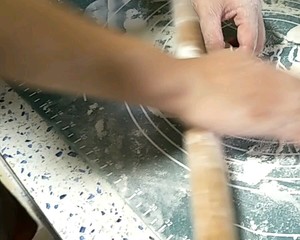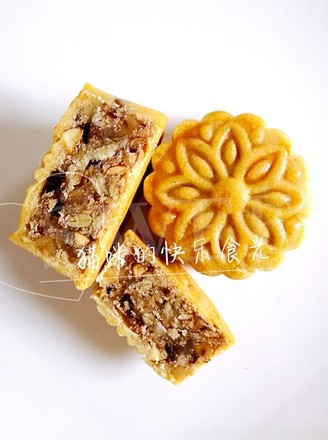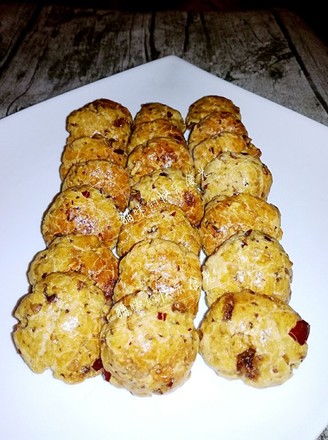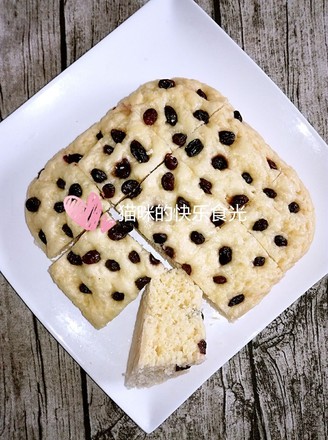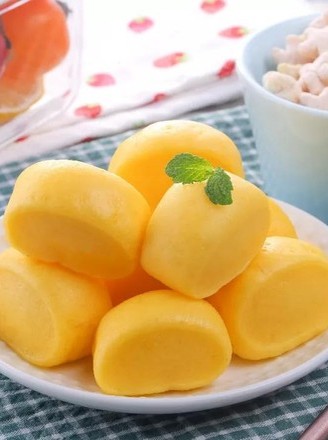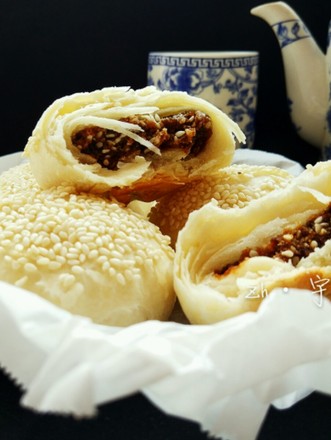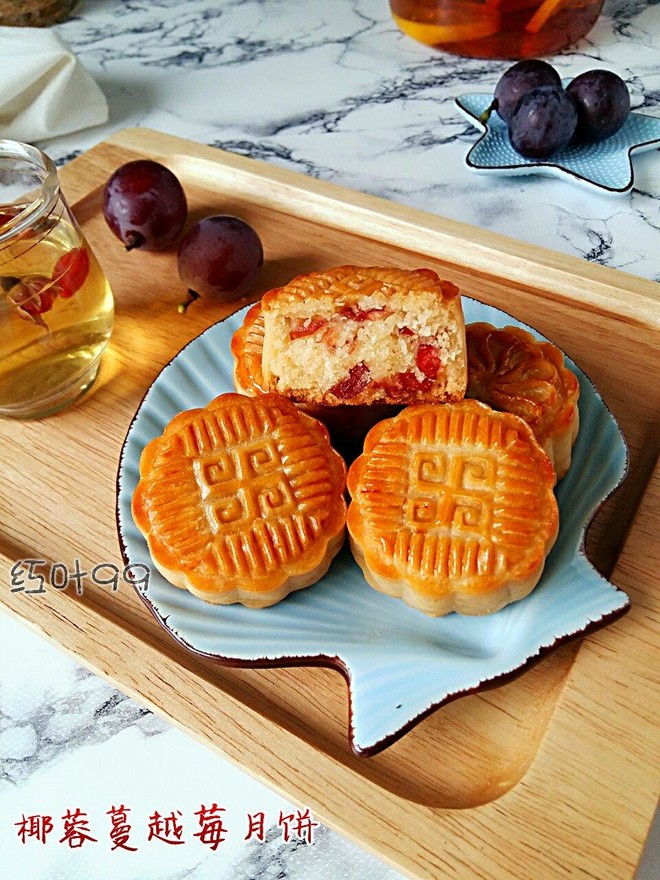Knead The Noodles by Hand for Three Minutes, Making Dumpling Skins that are Tough, Thin and Well-wrapped
1.
Weigh out 500 grams of all-purpose flour in a clean, water-free bowl or basin.
2.
Add 1.1 grams of salt to the flour and mix well with chopsticks or spatula.
3.
Add 240 grams of warm water. This amount of water needs to be figured out by yourself and adjusted according to the water absorption of your flour. To be on the safe side, you can start the test from 235 grams. The temperature of the water should not be hot to your hands.
4.
Use chopsticks or the spatula in the picture to stir into a flocculent like the picture.
5.
Wash your hands, wipe dry, and knead the flour into a ball. As long as the water on your hands is dried, your hands will definitely not stick when you knead the dough. You don't need to knead the dough vigorously for a long time, just knead it into a dough. It only took me 1 minute and a half to knead it into the shape in the picture. The dough is medium to hard, and the softness that feels like earlobes to the touch is appropriate. If the hands are sticky at this time, it means that the amount of water added is too much. You can add flour to knead the dough into a non-sticky dough.
6.
Cover the kneaded dough with plastic wrap and let it stand for 20 minutes.
7.
After standing for 20 minutes, I knead the noodles again with clean and dry hands. I only kneaded the noodles for ten times and I got the smooth noodles as shown in the picture. At this time, the noodles are smooth, potted, and hand smooth. Was it a pleasant surprise? Very labor-saving? Place the kneaded dough in a bowl again, cover with plastic wrap and let it sit for more than 1 hour before using it. PS: 1. After kneading the smooth surface, you can continue to knead it, if you have strength. It doesn't matter if you knead it to the back, it doesn't affect the later use at all. 2. Be sure to wake up for more than 1 hour after kneading the smooth surface, otherwise you will find that the dough is disobedient when you roll the skin. 3. I will make fillings during this period of waking up, so making this dumpling wrapper by myself will not delay or waste time at all.


8.
After the dough wakes up, prepare such a clean mat or board before taking it out. If you don't have any of these things, you can clean the countertop and use it cleanly. From a hygienic point of view, of course such clean mats and boards are reliable.
9.
Sprinkle some flour.
10.
Take out the awake dough and place it on the mat. There should be no extra movements here, just take out the dough honestly and let it lie quietly on the mat.
11.
Hold the dough with your left hand, and poke a small hole in the center of the dough with the thumb of your right hand as shown in the picture. Because I want to take pictures, I can only do this reluctantly.
12.
Then pick up the dough with both hands and make a circle, spread the dough to get a circle like the picture. The dough is very obedient, you don't need to knead it or whatever, you can experience how labor-saving obedient dough is!
13.
Find a place at random, pull it open with your hands, and get the long strip of dough in the picture.
14.
Divide into four sections by hand. Don't knead the dough!
15.
Take out one section and use both hands to form a thin strip like the one shown in the picture. The size of the noodles is just the thickness of the girl's thumb. At this time, quickly put the remaining dough back into the basin, and wrap it with plastic wrap to keep it moisturized to prevent the surface from drying out.
16.
The next step is the cutting agent. First use a knife to cut out the size of the medicine in the picture. I weighed it, I usually weigh around 7-9 grams.
17.
Turn the dough 90 degrees and stand it up, as shown in the picture.
18.
Cut it down with the second knife, and you get the second agent in the picture.
19.
The dough can be turned 90 degrees to stand up, or it can be turned 90 degrees upside down, as shown in the picture.
20.
Cut it down with the third knife, and you get the third agent in the picture.
21.
By analogy, cut the whole noodles to get the soup as shown in the picture. Try to be the same size as possible, so that the size and thickness of the skin can be about the same in the final rolling. Take your time, don't worry.
22.
Grab a large handful of flour and sprinkle it on the small dose.
23.
Rub the ingredients back and forth with both hands, so that each ingredient is evenly covered with flour.
24.
Take out a small potion.
25.
Press down with the palm of your hand along the knife edge to squash the agent into the picture.
26.
The compressed agent is shown in the picture. Now we are ready to roll the skin.
27.
Take out a pressed agent and prepare a rolling pin.
28.
Hold the medicine in the left hand and the rolling pin in the right.
29.
The position of the agent and the rolling pin is shown in the figure. The picture of how to take the medicine in the left hand can also be seen clearly.
30.
The coordination of the left and right hands is: when the left hand stabilizes the agent, the right hand pushes the rolling pin hard against the agent.
31.
After pressing, take the rolling pin with the right hand and turn the dose counterclockwise by about 30 degrees with the left hand.
32.
Then hold the agent with the left hand, and push the rolling pin towards the agent with the right hand.
33.
Immediately retract the rolling pin with the right hand, and turn the dose counterclockwise with the left hand.
34.
Repeat the above actions and you can get dumpling wrappers as shown in the picture. I usually complete one by repeating 20 times. If it is thick, you can see the line below, but it is not very transparent. The thickness of the outer dumpling skin can be used as a reference. Because I am a person taking pictures alone, so I can't get a dynamic picture. I will have the opportunity to add a dynamic picture for everyone in the future.
35.
Someone finally helped me to take a video, thank you brother-in-law!
36.
This is two rolls together, sometimes I roll three or even four together. The efficiency is much higher!
Tips:
The dumpling skins you roll out are usually rolled out immediately, otherwise they will stick together. I usually put 20-30 pieces in a group, and pack a set after finishing a set. The skin can be pinched easily without wiping water.

